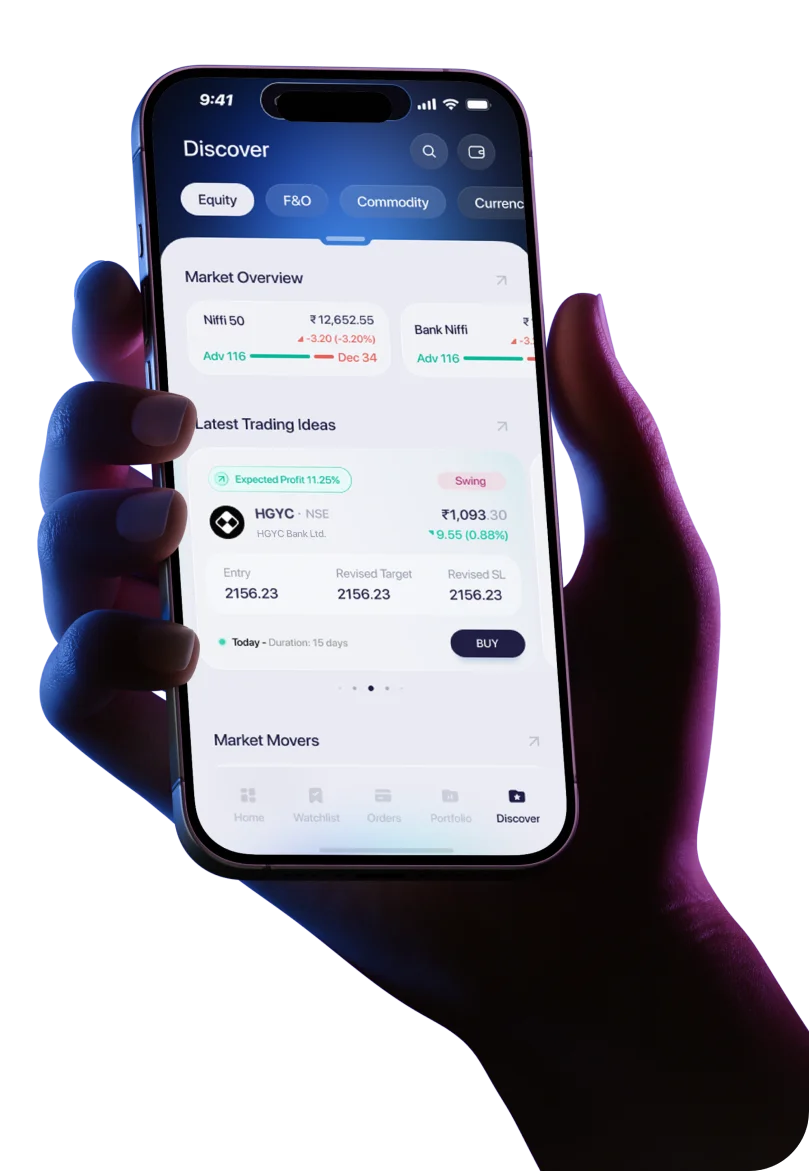Introduction: IV as the Market’s Expectation Meter
In the Indian stock market, option traders often talk about “IV”—short for Implied Volatility. Think of it as the market’s expectation meter. It doesn’t tell you what has happened in the past; rather, it tells you what the market collectively expects about the future movement of stock prices or indices.
Whenever big events like RBI policy announcements, Union Budget, elections, or corporate earnings are around the corner, traders don’t just look at prices. They also track volatility. If everyone expects turbulence, option premiums rise sharply even before the event. This rise isn’t random—it’s captured through Implied Volatility.
For traders in India, understanding IV is essential. It can mean the difference between buying expensive options blindly and using volatility data smartly to design strategies. In this article, we’ll explore IV in detail, from its definition and calculation to practical trading applications in the Indian market.
What is Implied Volatility?
Implied Volatility is a forward-looking measure of how much the market expects an asset’s price—say Nifty, Bank Nifty, or Reliance Industries stock—to fluctuate in the future. Unlike historical volatility, which looks at past price swings, IV is derived from option prices today.
Here’s the distinction in simple words:
- Historical Volatility (HV): Imagine checking last year’s rainfall data to understand how rainy it was.
- Implied Volatility (IV): Imagine asking weather experts what they expect the rainfall to be this year.
That’s the difference. HV = past reality. IV = future expectation.
When option premiums rise unusually high without a major price move, it’s often because traders expect something big ahead. IV doesn’t predict direction (up or down). It only signals magnitude of expected movement.How is Implied Volatility Calculated?
IV is not directly observable—it’s back-calculated from option prices using mathematical models such as the Black-Scholes Model or the Binomial Model.
Here’s how it works in practice:
- Traders know the inputs: current stock price, strike price, time to expiry, interest rate, dividends, and the option’s market price.
- They put all these into the pricing model.
- The only unknown is volatility.
- The model is then “reverse engineered” to find the volatility value that makes the model price equal to the actual market price.
That volatility figure = Implied Volatility.
Volatility Surface
If you plot IVs across different strikes and expiries, you get a volatility surface. This helps traders see patterns like the volatility smile or skew, which we’ll discuss later.
Why Implied Volatility Matters
Implied Volatility is not just a number. It affects every option trader directly:
- Impacts Option Premiums
- Higher IV → Options become expensive.
- Lower IV → Options become cheaper.
Example: Before elections in India, Nifty options premiums usually rise sharply because traders expect uncertainty.
- Signals Market Sentiment
Rising IV means traders anticipate volatility (fear or excitement). Falling IV means markets expect stability. - Helps in Risk Management
Traders compare IV with Historical Volatility (HV). If IV is much higher, options may be overpriced—offering opportunities for selling. - Identifies Mispricing
If Nifty’s actual volatility turns out lower than its IV, option sellers benefit since they sold expensive options.
In short: IV is to option traders what fuel price is to taxi drivers. It determines your cost of trade.
Expected Move & Standard Deviation
A powerful way to use IV is to estimate the expected move of a stock or index. This is based on the concept of standard deviation in statistics.
- ±1 standard deviation → 68% probability price stays within range.
- ±2 standard deviations → 95% probability.
Example:
Suppose Reliance stock is at ₹2,500 and has an annualized IV of 20%.
- 20% of 2,500 = ₹500.
- So, one year expected range = ₹2,000 to ₹3,000 (68% chance).
- If you scale it down for a 30-day option, the expected move will be smaller (using square root of time adjustment).
This helps traders set realistic targets and plan hedges.
IV Rank & IV Percentile
Since IV constantly changes, traders use metrics like IV Rank and IV Percentile to judge whether current IV is high or low compared to history.
- IV Rank: Compares today’s IV with its past 1-year range.
Example: If Nifty IV has ranged between 10% and 30% over the last year and today it is at 25%, IV Rank = 75%. - IV Percentile: Tells you how often IV was below today’s level in the past year.
Practical takeaway:
- High IV Rank/Percentile (say 80%+): Options are expensive → consider selling strategies.
- Low IV Rank (say 10%): Options are cheap → consider buying strategies.
Volatility Smile & Skew
In theory, all options of the same expiry should have the same IV. But in reality, IV changes across strike prices. This creates patterns like:
- Volatility Smile: IV is higher for deep ITM and deep OTM strikes compared to ATM.
- Volatility Skew: IV is higher on one side (usually puts in India due to downside fear).
For example, in Nifty options, put options often carry higher IV than calls—because traders fear sharp crashes more than sharp rallies.
Understanding these patterns helps traders design spreads or hedges more effectively.
India-Specific Context
In India, traders often track India VIX, the Volatility Index that measures expected volatility of Nifty options over the next 30 days.
- Typically, Nifty IV ranges between 12%–18% in normal markets.
- Before big events (e.g., 2019 elections, COVID-19 crash, RBI policy), India VIX has spiked to 30–80 levels.
This directly impacts option pricing. For example, during the COVID crash in March 2020, even far OTM Nifty options were trading at unusually high premiums due to skyrocketing IV.
Practical Tips for Traders
- Buy Options When IV is Low
Example: During calm markets, IVs drop. Buying calls or puts is cheaper. - Sell Options When IV is High
Example: Ahead of Union Budget, IV spikes. Selling straddles or strangles can be profitable once IV falls after the event. - Use Vega Awareness
Vega measures how much an option’s price changes with a 1% change in IV. High-Vega options are more sensitive. - Choose Strategies Based on IV
- High IV → Straddles, strangles, iron condors (selling strategies).
- Low IV → Calendar spreads, debit spreads, long options (buying strategies).
FAQs on Implied Volatility
Q1. What affects Implied Volatility?
Events like elections, RBI policies, corporate results, global news, or sudden crashes increase IV. Calm, predictable markets lower IV.
Q2. Is high IV good or bad?
Neither. High IV means options are expensive. It’s good for option sellers but risky for buyers. Low IV benefits buyers.
Q3. Can IV predict market direction?
No. IV only tells you how much movement is expected, not which way.
Q4. What is IV Rank?
It shows where today’s IV stands compared to the last 1 year’s high and low. A high rank means options are relatively expensive.
Q5. How does IV differ from Historical Volatility?
HV is backward-looking (past realized volatility). IV is forward-looking (market’s forecast of volatility).
Q6. Why does India VIX matter?
India VIX gives a snapshot of the overall market’s fear/greed level. Traders use it to judge if options are underpriced or overpriced.
Conclusion
Implied Volatility is one of the most important yet misunderstood concepts in options trading. It doesn’t forecast direction but quantifies expected movement. For Indian traders, tracking IV, whether in Nifty, Bank Nifty, or stock options, can provide critical insights into pricing, strategy, and risk management.
Remember:
- IV high → Options costly → Selling strategies shine.
- IV low → Options cheap → Buying strategies make sense.
By monitoring IV along with tools like IV Rank, India VIX, and volatility smile, traders can make smarter decisions and avoid costly mistakes. In short, always check IV before entering an options trade—your profits depend on it




 Easy & quick
Easy & quick
Leave A Comment?